Australia So Much to See
Coober Pedy - Life in and around Coober Pedy past and present
Water has always been a critical need for Coober Pedy. Even on the day young Will Hutchison made the discovery of opals, the
rest of the party had gone looking for a water source. Water has been the greatest need in Coober Pedy, with the area having
no surface water, and in a climate with very little rain. In 1922, a 500,000 gallon (two million litre) underground tank was
constructed to collect rain runoff, but this proved inadequate. In 1967 a desalination treated salty bore water, drawn from
100 metres, but this too was inadequate. A modern desalination plant now treats Artesian water drawn from 23 kilometres north
east of the town.
A Heritage Trail drive around town took us to many features.
In the northern part of town, near the Umoona Aboriginal Settlement which has no public access, the Old Police Station Camp and Lock-up is
on display with signage.
Medical history of Coober Pedy is told on plaques outside the present hospital.
As a result of the first death on the opal field
in 1921, miners tried unsuccessfully to establish a hospital.
Until 1946, the community relied on the medical chest and
radio contact. That year the Bush Church Aid Flying Medical Service began monthly clinics and emergency evacuations. In
1968, the Royal Flying Doctor Service took over these duties.
At first, when the Flying Doctor plane made emergency night
landings, people drove their cars to the dirt airstrip to provide the necessary landing lights.
The site of the underground Post Office is now a private dwelling, accessed off Post Office Hill Road.
We did not find
the heritage listed “first dugout” from where it was marked on the self guided tour brochure.
The area once known as the
Big Flat Opal Field is now part of the town housing area.
A modern school is on the site where the first school was just a tin shed
in 1960. The is also a TAFE in Coober Pedy.
The cemetery is known as Boot Hill. The many cultures that make up the diverse Coober Pedy population show with their
types of tombstones, big and small.



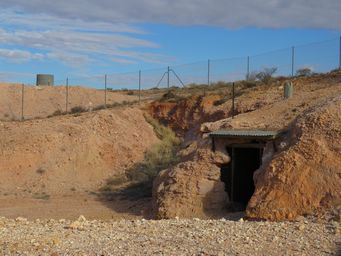
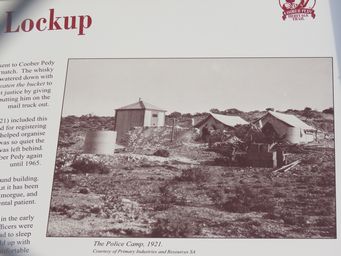
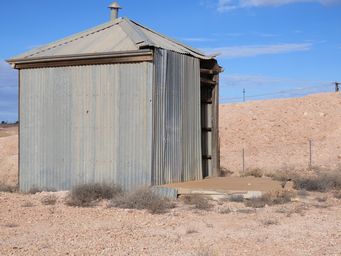
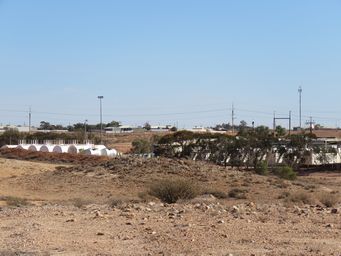


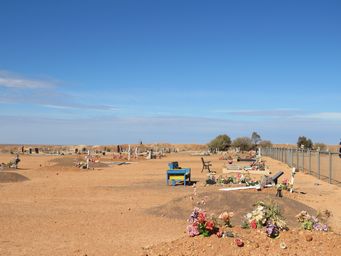

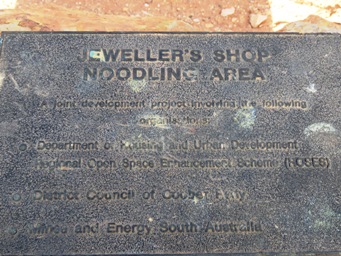
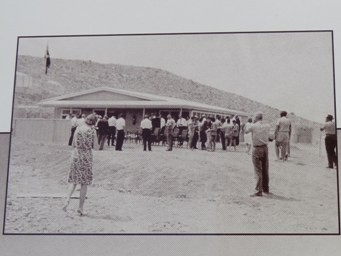
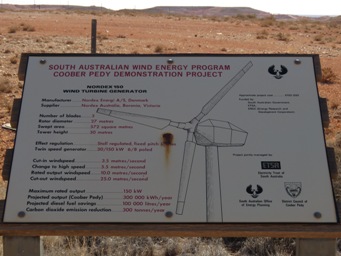
The townspeople and the Bush Aid Church Committee opened a medical centre in 1965, staffed by two nursing sisters who handled every emergency. They also taught Sunday School and, in the side, generously stitched up injured animals.
Above photo, from an information board at the present hospital, shows the opening of the original hospital in 1965.
The present hospital, built in 1982, won an award for architectural design excellence. The hospital is used by residents and tourists of the surrounding outback region. The Royal Flying Doctor Service continues to service Coober Pedy for serious emergencies.
Crocodile Harry
Arvid Blumentha was born in the medieval village Dundaga, Latvia, in 1925. In 1942, he joined the Nazi-occupied
Latvian forces on the Eastern Front, sustaining serious injuries and even being captured by American troops at one stage.
After
the war, Arvid emigrated to Australia, where he took up hunting crocodiles.
Crocodile Harry moved to Coober Pedy to fossick for
opals in 1975.
Growing numbers of visitors to his Coober Pedy home helped add to the graffiti, trinkets and letters that adorn the walls, complementing
the tasteless sculptures and vulgar versions of the female form that are too politically incorrect to describe in graphic detail here.
Harry
died in 2006 aged 80, but his spirit lives on in two ways: a crocodile statue in his home town in Latvia, and his underground home
in Coober Pedy which is now a museum to one of the outback’s most colourful characters. Found six kilometres west of town on the Seventeen
Mile Road, Crocodile Harry’s Underground Nest is open every day between 9 am – 12 pm and 2 pm – 6 pm, and the price of admission is
a $7 contribution to an ‘honesty box’.
Harry’s underground lair in Coober Pedy made an appearance in the 1985 film Mad Max Beyond
Thunder